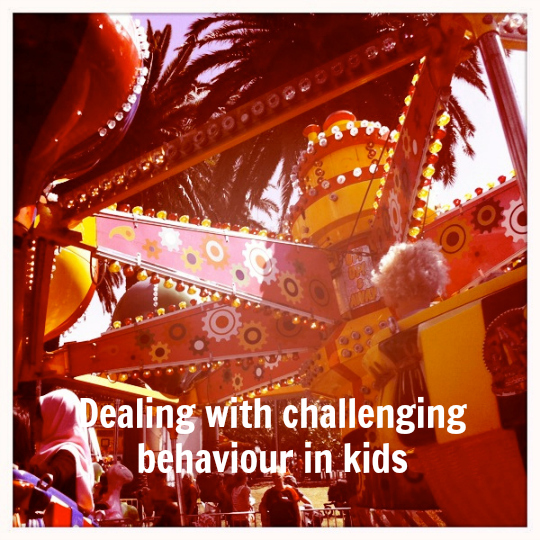
Today’s post is answering a question from a reader. I will note first that I am not a child behaviour specialist. My suggestions come from the reading I have done and the practical experience of being a parent over the last 12 years.
*****
We are experiencing some unusual difficulties with our four year old. I know the whole ‘focus on the positive & neglect the negative’……but our son has made a complete 360 degree change in behaviour in the last 2 months. He has gone from a compliant, helpful son to some sort of disagreeable, tantrum throwing 2 year old in a four year old body.
He is screaming and throwing tantrums at even the slightest thing, the answer to everything is “no” or “never”, he is wetting through his night nappies, when re – directed he screams in anger and bites, he wont even feed himself dinner most nights a week and cries until one of us does it or he goes without. None of these things he has done before, not even as a two year old!!!!!
*****
I have written on the blog before about the periods of disequilibrium that children can go through once they reach a half year point (eg, 2.5 years old), and these periods of disequilibrium continue until kids reach around 6 – 7.
The reason I know this is because my gorgeous second son once he reached 2.5 years old, would go through periods where I found him very challenging. It is certainly possible that your child has just reached a period of disequilibrium and you may need to find new strategies to guide his behaviour.
With my second son, I did quite a bit of reading and research to work out ways to deal with and guide his behaviour. There were two books I read that helped me incredibly, Children are People Too by Louise Porter and The Challenging Child by Dr Stanley Greenspan.
Children are People Too by Louise Porter
Louise Porter’s Children are People Too is a book I highly recommend for all parents with young kids. I have written about it a number of times on the blog and you can find a broad overview here. Porter has a great PDF you can download freely from her website on Guiding Children’s Behaviour.
I learnt much from this book, but the most practical thing it gave me was an alternative to time out. It gave me an in the moment strategy to deal with his tantrums and anger in a way I was comfortable with, but was also respectful to him. It is the “bring them in close” method which I then went on to use on all subsequent children.
The Challenging Child by Dr Stanley Greenspan
The second book was The Challenging Child by Dr Stanley Greenspan. The book is about understanding, raising, and enjoying the five “difficult” types of children, which he lists as:
- The Highly Sensitive Child
- The Self Absorbed Child
- The Defiant Child
- The Inattentive Child
- The Active/Aggressive Child
I know some readers will have issues with the label of “difficult”child, but if you read the book, you will find that the label is really just a method for parents to better understand and relate to their child, not about pigeon holing them for the rest of their life.
Greenspan helped me to get an better understanding as to why, although parented almost exactly the same as my first child, my second son behaved so very differently:
Why are some children more difficult than others? Our research, as well as research by many others, such as Jean Ayers, T. Berry Brazelton, Sybil Escalona, and Lois Murphy, has shown that children come into this worked with individual differences in physical makeup. Some children, for example, have bodies that just don’t feel comfortable, and so they tend to be fussy, irritable, negative, or withdrawn. Even in the early months of life, we have found, babies can reveal unique traits in specific sensory perceptions and in the workings of their motor systems.
The best practical strategy I took from this book was a technique called floor time. In short it means you allocate some time each day (I think they said an hour but I worked on 30 minutes) each day to your child where you do what ever they want to do play wise (not TV etc). The purpose of this is to open a circle of communication with your child, to connect with them and better understand their behaviour. This PDF attachment gives you more info on Floortime.
When we were going through one of our more particularly challenging times with our son, I used floor time and it really helped me understand what was going on with him and find ways to guide his behaviour when he was very keen on not listening to me and taking me on!
Even now I use my own version of this strategy with the kids. On weekends and across school holidays, I will spend 20 minute blocks with each child on an activity of their choice. For me this is a great way to connect with the kids and also it builds up a bank as well, letting me then find time to do other activities around the house on my own.
Understanding the behaviour
Louise Bates Ames has a whole series of books aimed at different age groups and the challenges they bring. I have only read one of them, but would imagine the other age groups would be just as helpful.
- Your One-Year-Old: The Fun-Loving, Fussy 12-To 24-Month-Old
- Your Two-Year-Old: Terrible or Tender
- Your Three-Year-Old: Friend or Enemy
- Your Four-Year-Old: Wild and Wonderful
- And the series actually continues all the way up to Your Ten- to Fourteen-Year-Old.
They are older books, but they really help you gain a solid understanding of your child’s behaviour for that particular age and stage. As a parent, I have found if I can understand the behaviour, I am in a much better position to handle it. The books also let you consider your child’s behaviour within the realms of normal development.
Discipline and Routine
I have found guiding my kids behaviour is much easier if we have know solid routines for them to follow. All our kids have routines that they follow from the youngest at 2.5 to our oldest at 12 year old. If you are interested in seeing what they look like, I detailed them in a post last year – Children’s Routines.
The word discipline can mean different things to different parents. My view of discipline is along the lines of this quote below from Louise Porter:
Instead of teaching compliance, then, a guidance approach to raising children believes that we must teach them how to be considerate of others -to think about the effects of their actions on others. This comprises(Porter, 2006):
- developing in children a sense of right and wrong so that, even without supervision, they act considerately – not because they might be punished for doing otherwise, but because it is the right thing to do;
- teaching children to manage their emotions so that their outbursts do not disturb those around them but, more importantly, so that they themselves learn to cope with setbacks in life;
- teaching children to cooperate so that all can have their needs met;
- giving children a sense of potency – that is, a sense that they can make a difference to themselves and their world and can act on their values.
Discipline is an integral part of a child’s development and finding your discipline style is important. I often say that “kids can smell indecision” and they seize upon it. Consistent discipline lets kids know what is and isn’t going to tolerating in the family. These previous posts will give you more information on my appraoch to discipline:
Do you want some free tools to help you organise the chaos of family life?
The Planning With Kids Newsletter is called NOW with Nicole Avery. It is an upbeat weekly newsletter that aims to help you organise the chaos of family life and find simple ways to enjoy it more.
My philosophy is to organise the known and repetitive tasks of family life so you create a solid foundation that allows you to manage the more unpredictable and challenging elements.
You can sign up for the free newsletter in the sign-up box below! To say thank you for signing up for the newsletter I have created a simple but super useful guide for you to help you organise the chaos of family life. The free download helps simplify some of the repetitive and time-consuming tasks that occur as part of daily family life. Guide ✼ Plan ✼ Check ✓ contains 10 separate printable tools that you will be able to use over and over again.

Sign up and organise the chaos of family life!
